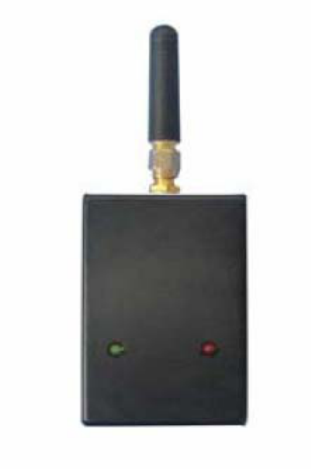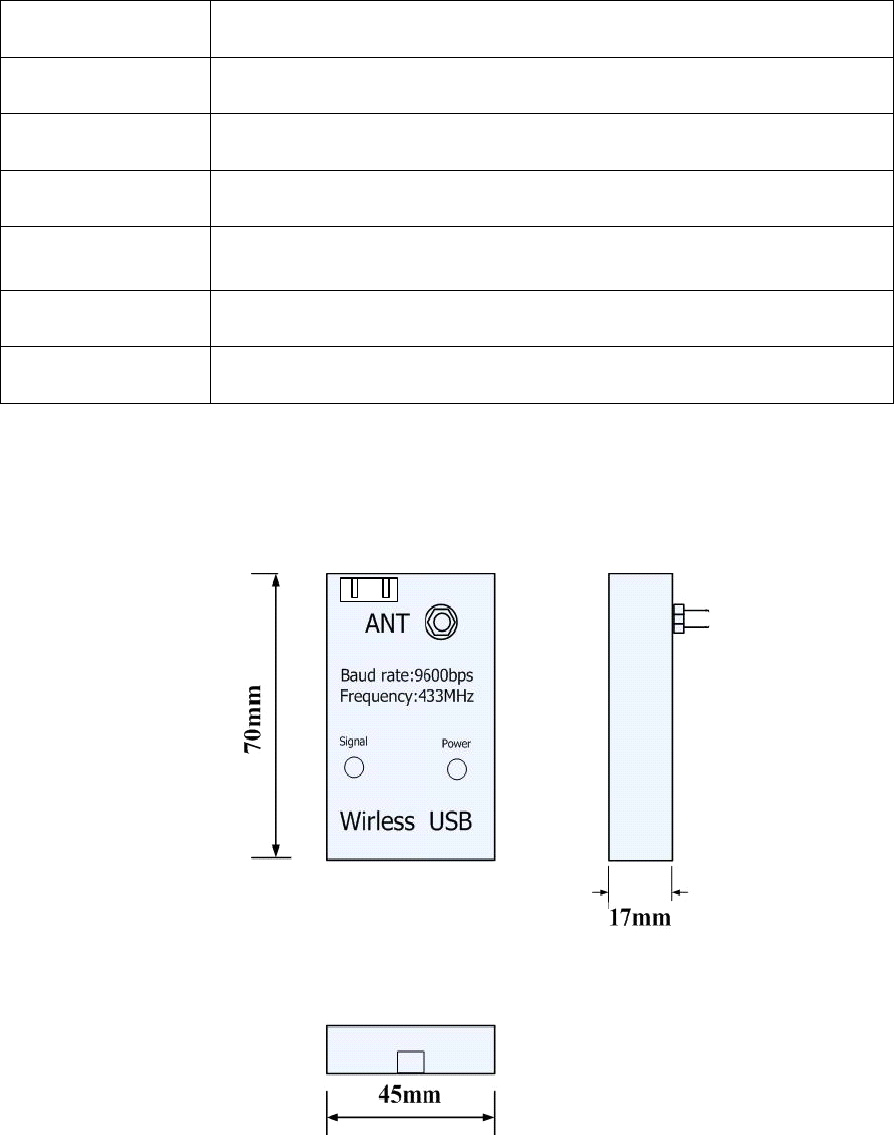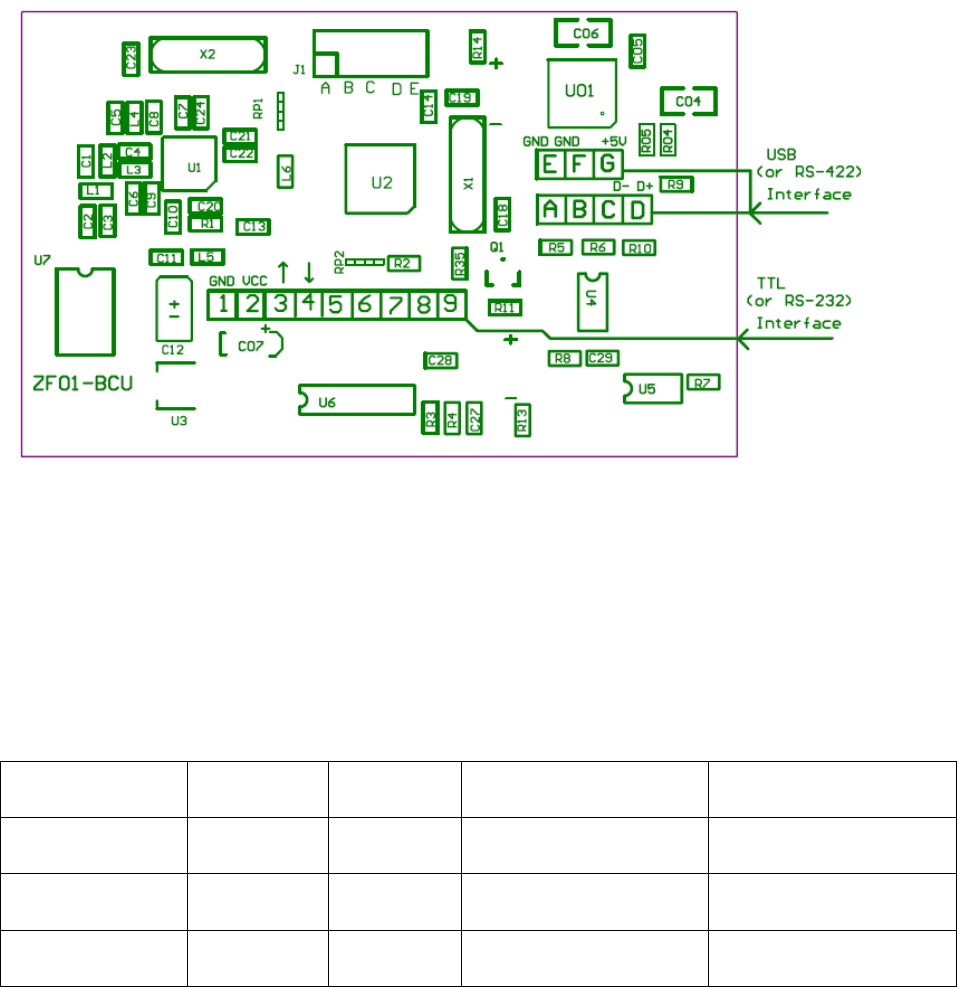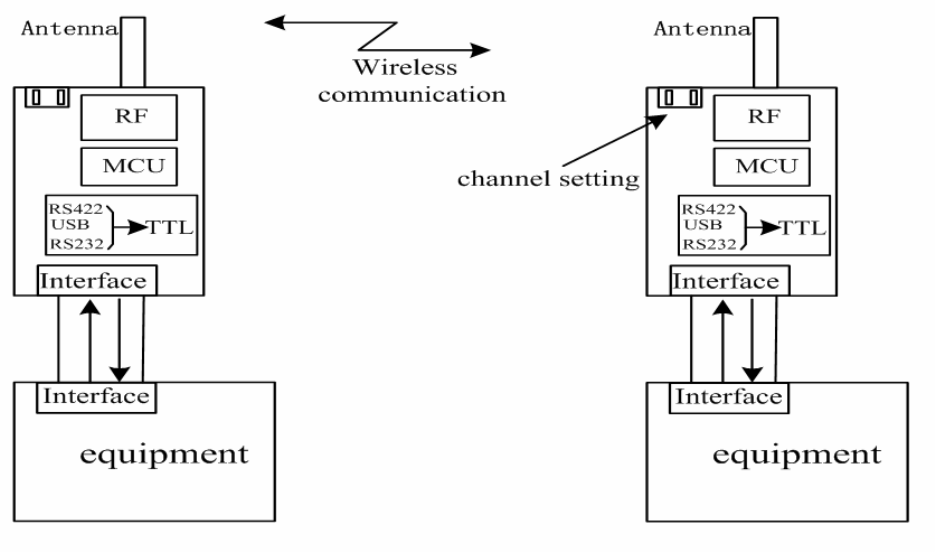Contents
- 1. TWNZF01-D_Operation Manual_Rev2
- 2. user manual
user manual

ZF01-D Wireless Module
Operation Manual
Figure 1. ZF01-D wireless module
z Features:
1.Providing RS-422/USB/RS-232/TTL interface,highly integrated,can connect with
t ransceiver equipment directly.
2. Low power RF transmission:Maximum transmit power 10mW
3. GFSK/FSK modulation mode
4. Crystal frequency stabilization.
5. High-efficiency forward error correction channel encoding technology is used.
z Main Application Areas:
1. AMR – Automatic Meter Reading
2. Wireless alarm and security systems
3. Wireless POS, PDA
4. Long-distance non-contact RF smart cards, RFID tags.
5. Wireless Field Bus、wireless conference voting system

z Main Technical Specifications:
RF channels(MHz) 433.050, 433.640, 434.410,434.910
modulation mode GFSK
baud rate 9600bps
output power 10mW
Interface data
format UART ,8E1/8N1 data format
Power supply DC 3.6V---5V
overall dimensions 70 X 45 X 17 mm
Channel
Figure2. interface and sizes

z Interface Description:
ZF01-D wireless module can be directly connected to equipment by Interface port,shown as
Figure3. wireless communication application diagram shown as Figure4
Figure3. ZF01-D Interface connect
Table1.Interface connect
USB connect D+ to D D- to C VCC to G GND to E (orF)
RS-422 connect +TX to A -TX to B -RX to C +RX to D
RS-232 RXD to 6 TXD to 7 GND to 5
TTL RXD to 4 TXD to 3 GND to 5

Figure4. ZF01-D wireless communication application diagram
z Channel setting
There is a channel setting switch as shown in Figure 2, defined as A,B,C respectively, so
there are 8 channels can be set .
Channel A1 A0 Freq.
0 OFF OFF 433.050MHz
1 OFF ON 433.640MHz
2 ON OFF 434.410MHz
3 ON ON 434.910MHz
Canada/FCC Statement:
This equipment has been tested and found to comply with the limits for a Class B digital
device, pursuant to part 15 of FCC Rules. These limits are designed to provide reasonable
protection against harmful interference in a residential installation. This equipment generates
and can radiate radio frequency energy and, if not installed and used in accordance with the
instructions, may cause harmful interference to radio communications. However, there is no
guarantee that interference will not occur in a particular installation. If this equipment does
cause harmful interference to radio or television reception, which can be determined by
turning the equipment off and on, the user is encouraged to try to correct
z The interference by one or more of the following measures:
Reorient or relocate the receiving antenna.
Increase the separation between the equipment and receiver.
Connect the equipment into an outlet on a circuit different from that to which the receiver is
connected.
Consult the dealer or an experienced radio/TV technician for help
z This device complies with Part 15 of FCC Rules.
Operation is subject to the following two conditions:
1. This device may not cause harmful interference, and
2. This device must accept any interference received, including interference that may cause
undesired operation.
Note:“Changes or modifications to this unit not expressly approved by the party responsible
for compliance could void the user’s authority to operate the equipment.”